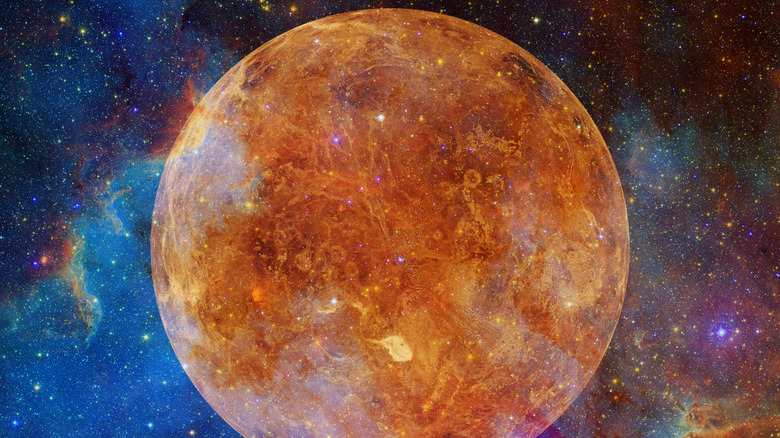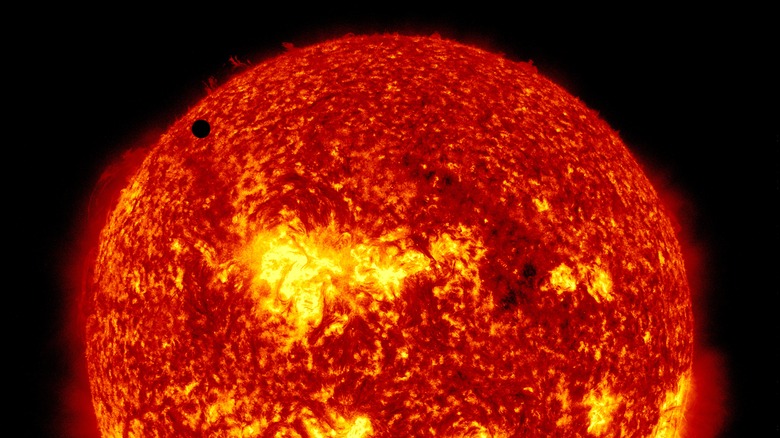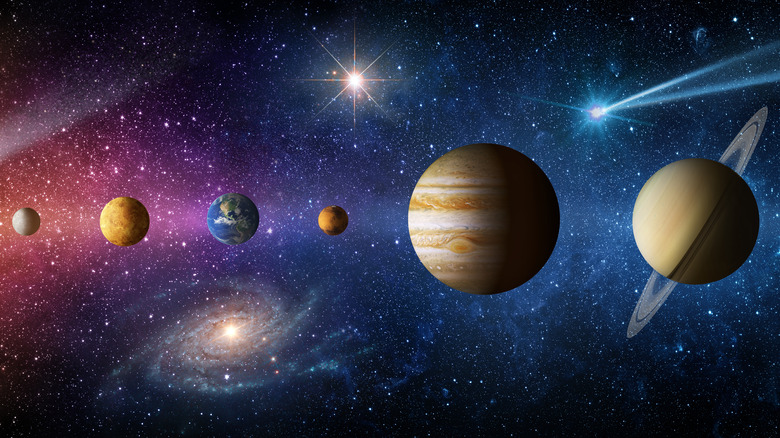Things About Venus That Remain A Mystery
When ground-based telescopes poke through deep space, providing a circular glimpse into worlds beyond our own, they catch just about every planet in the solar system — except Venus (via WBUR). Venus is unique; its atmosphere consists of swirling clouds obscuring it from distant view, making only close encounters viable for examination.
Getting up close and personal with Earth's so-called "Evil Twin" is no small feat. Boasting a boiling hot surface that is every bit of 900 degrees Fahrenheit and sporadically showering sulfuric acid rain, Venus is not exactly the most hospitable place to visit in the Milky Way (via CBS News). Perhaps this is why, despite being one of the closest planets to our own (via Live Science), Venus has gone overlooked and almost completely unexplored for decades. Now, with the Parker Solar Probe poised to "touch the sun" and Venus serving as its flyby pitstop along the way (via Earth Sky), some of the mysteries of Venus are being deciphered.
We don't know why Venus is on fire
According to The Science Times, the flames of Venus' fiery surface have fueled many theories but no concrete explanations for why the planet is so hot it could melt lead down to vapor (via Weather). Scientists speculate that Venus was once comparable to Earth in terms of temperature (via Space), with surface temps ranging between about 68 degrees Fahrenheit and 122 degrees Fahrenheit for billions of years.
It is suspected that a catastrophic event took place on the planet about 700 million years ago, causing its surface to sizzle. This event likely caused the outgassing of carbon dioxide to be omitted from the rocks on the planet's surface. The end result was the scorching conditions we see on the planet today. Understanding when and how this event transpired could shed light on the ever-looming threat of climate change. But alas, scientists remain stumped regarding Venus' hot-to-trot condition.
We can't figure out why Venus appears to be spinning in the wrong direction
When space objects rotate, they almost always do so in a counter-clockwise direction. This isn't restricted to just planets; it includes asteroids, too, and even the sun (via National Radio Astronomy Observatory).
There are only two exceptions that we know of. One is the planet Uranus, which is rotating parallel to its orbital plane. The other is Venu,s which is spinning clockwise, in precisely the opposite direction of every other cosmic object. We know why Uranus is twisted in its rotation: The whole planet is tilted and rotating through space on its side.
As for Venus, the verdict is still out. Theories range from cosmic collisions to gravitational pulls to tidal torques and falling moons (via Science Alert). What we do know is that this unusual spin causes Venus to rotate at a rate so slow that its day is now longer than its year (via Royal Museums Greenwich).


